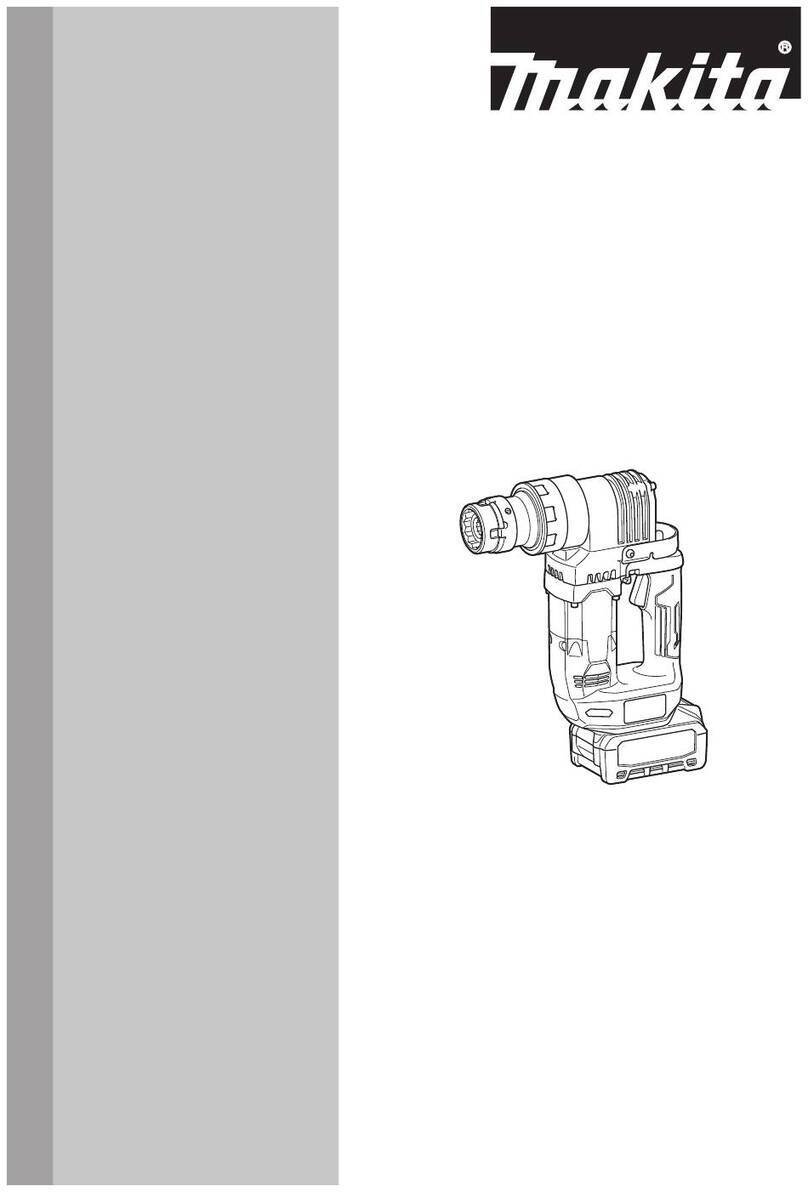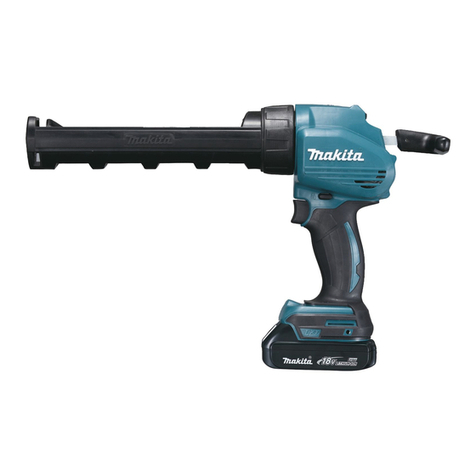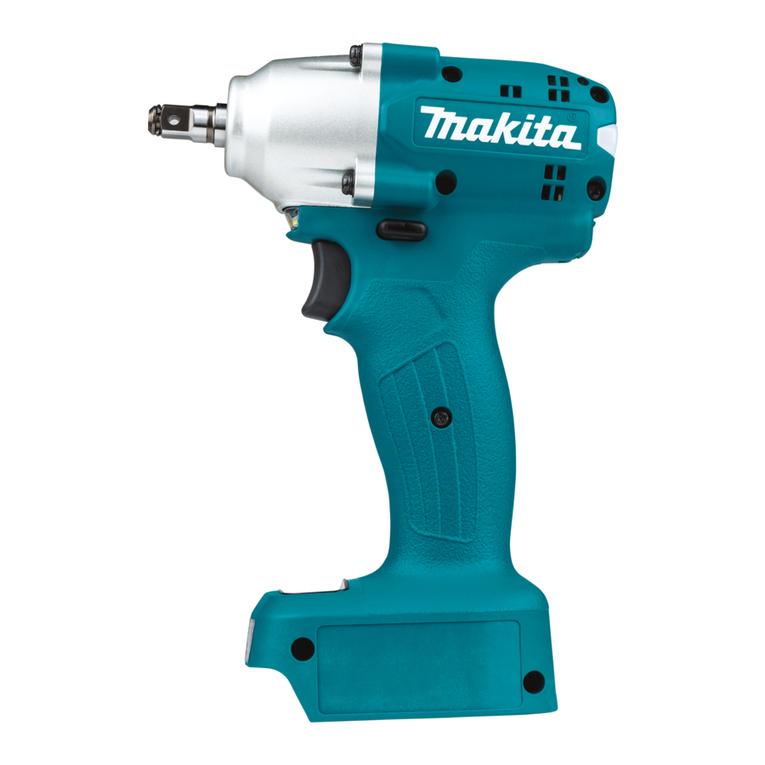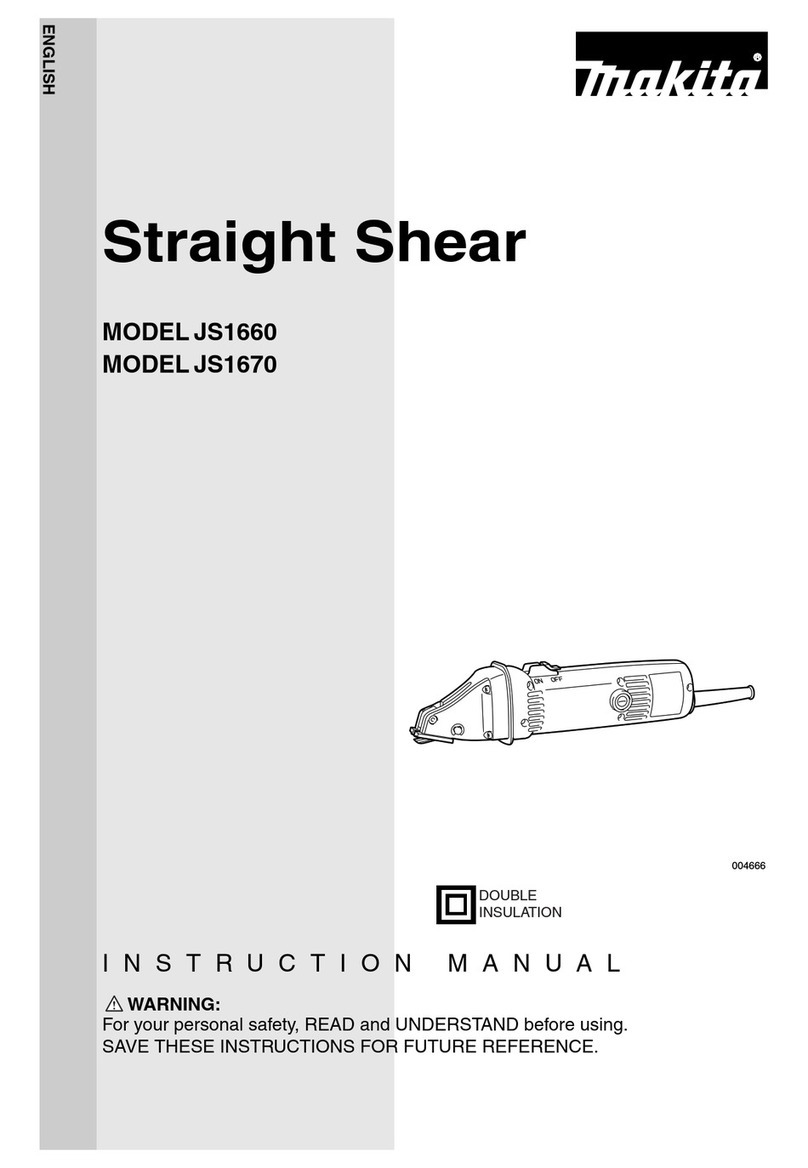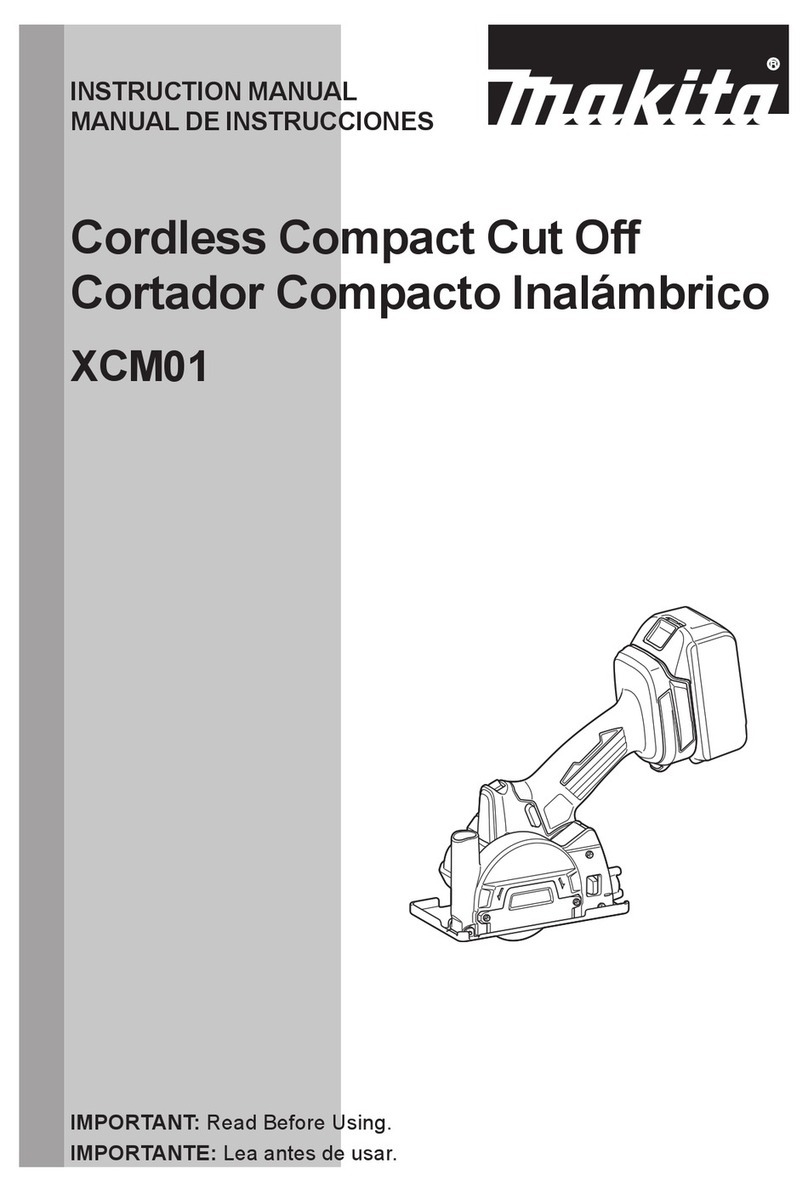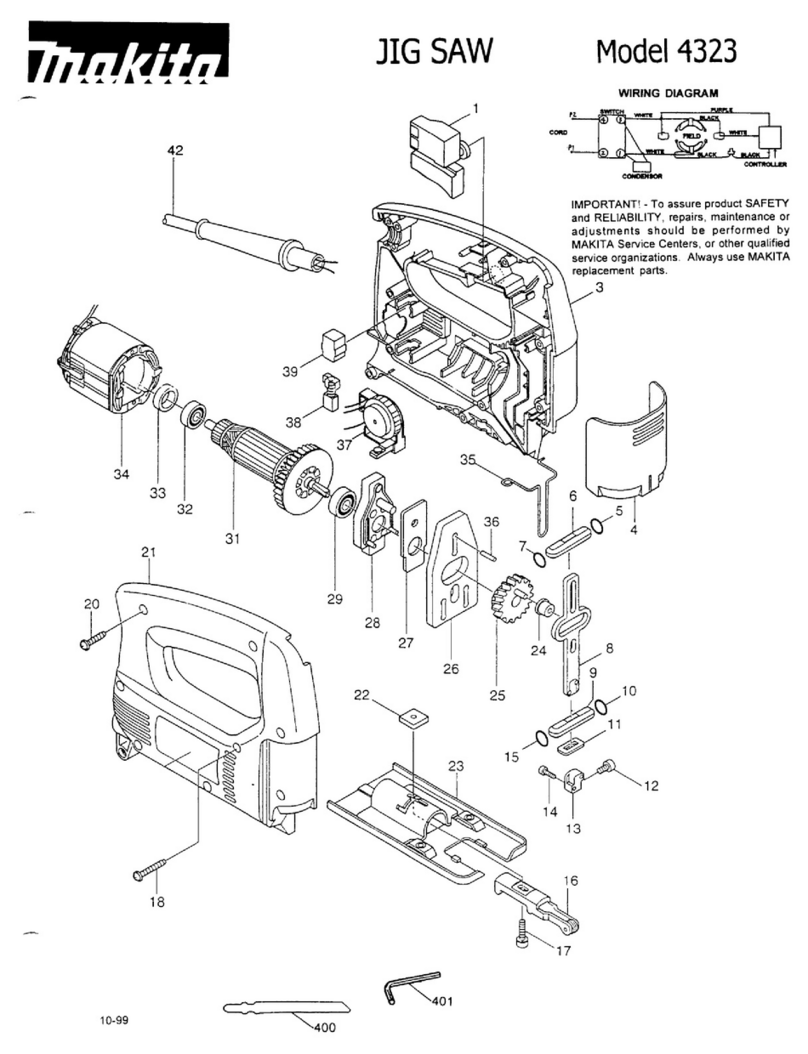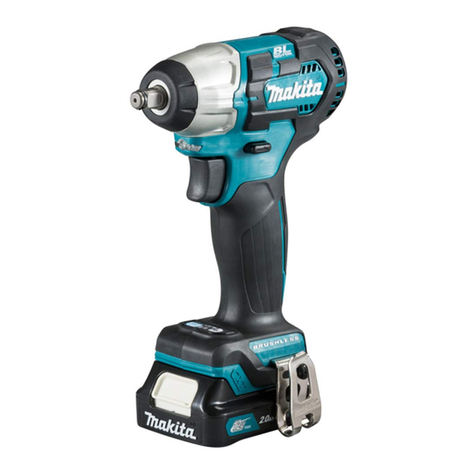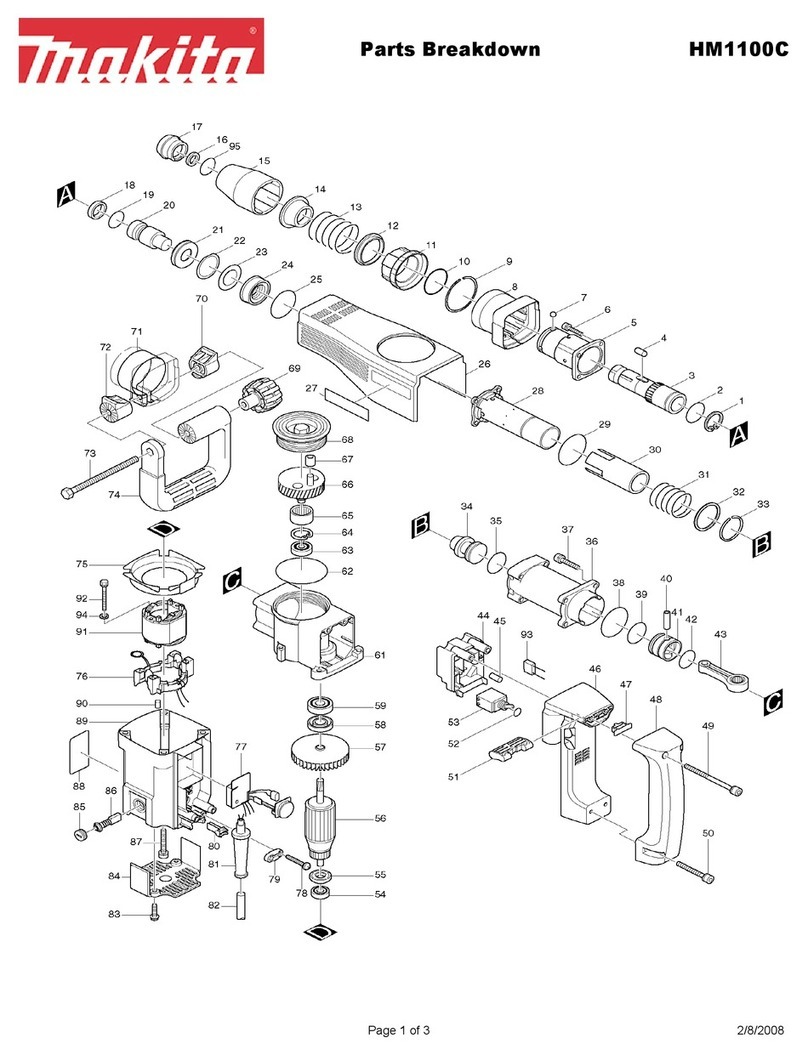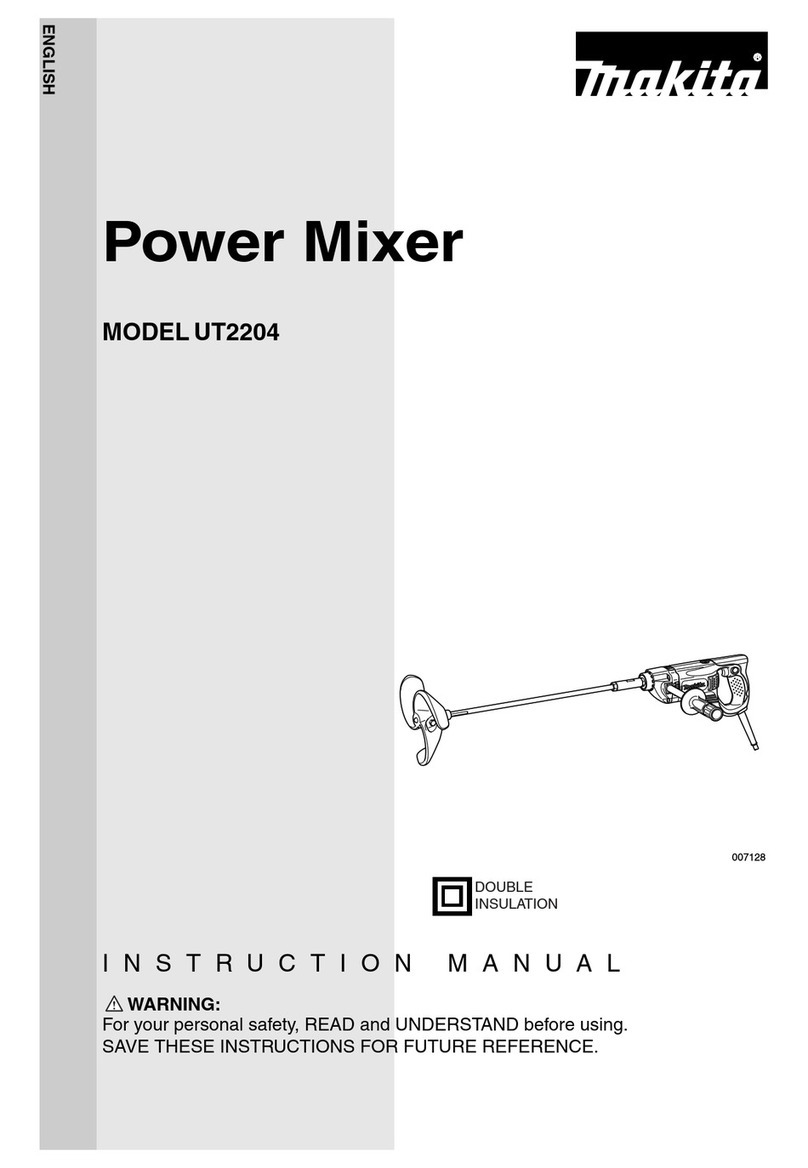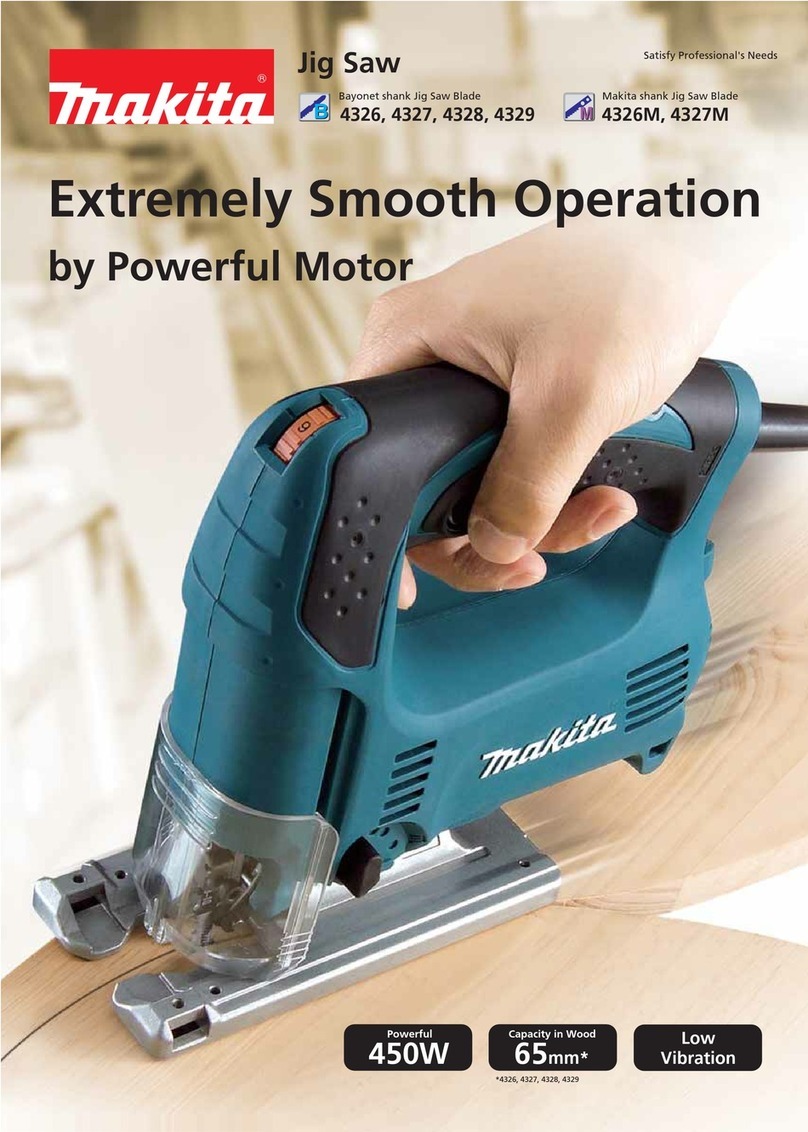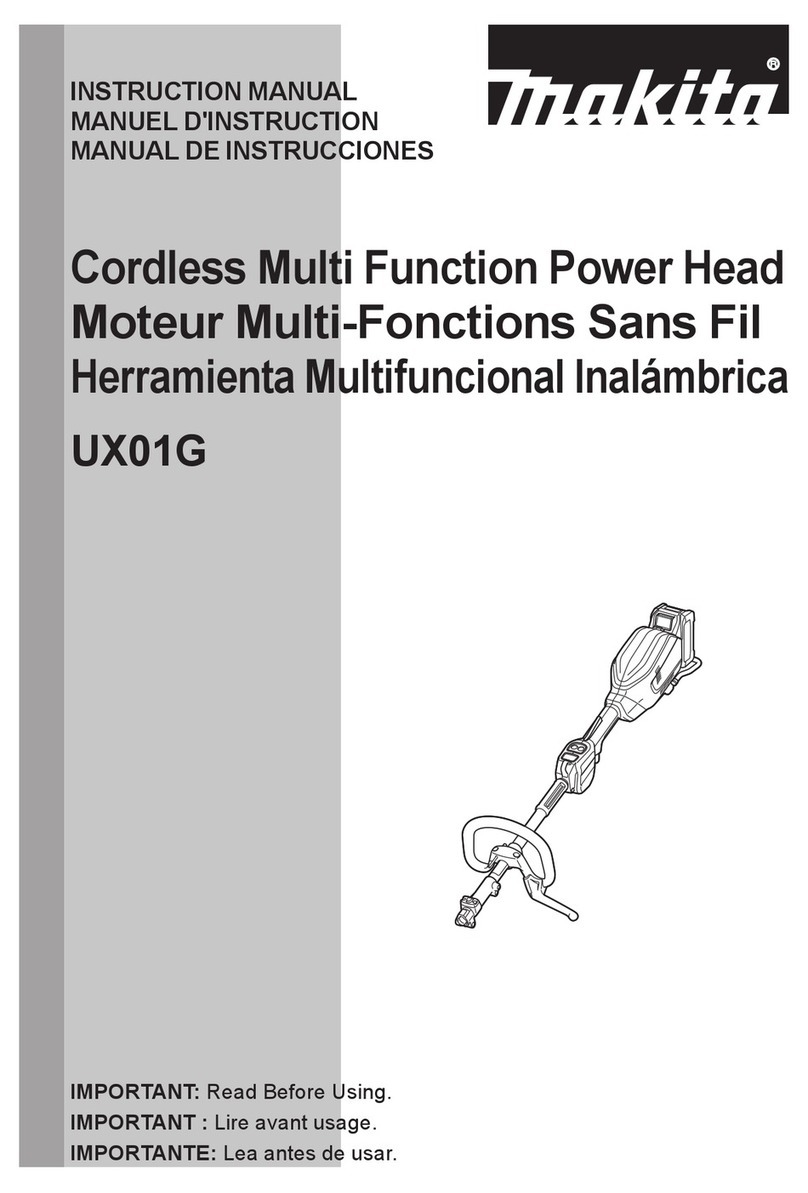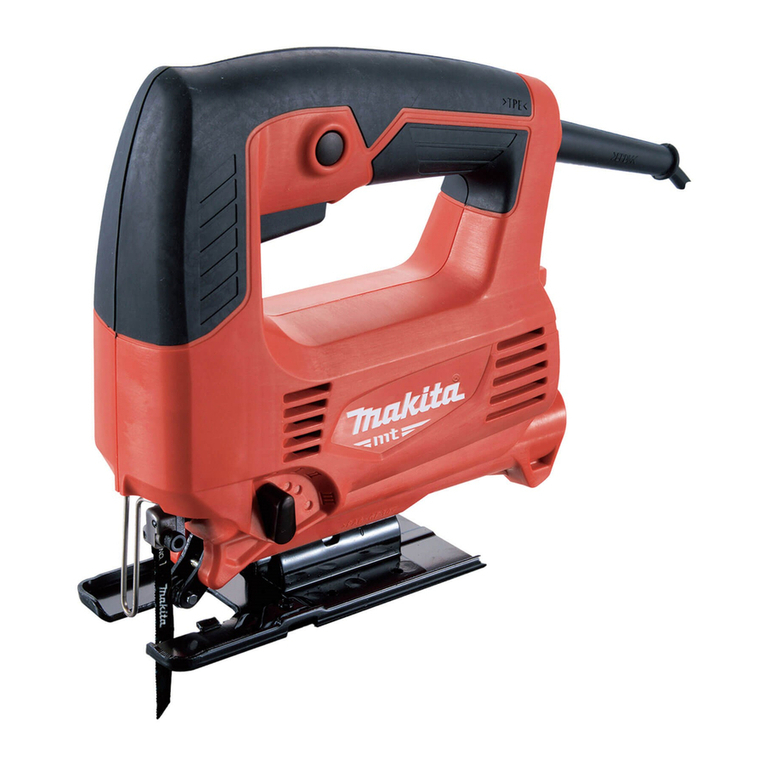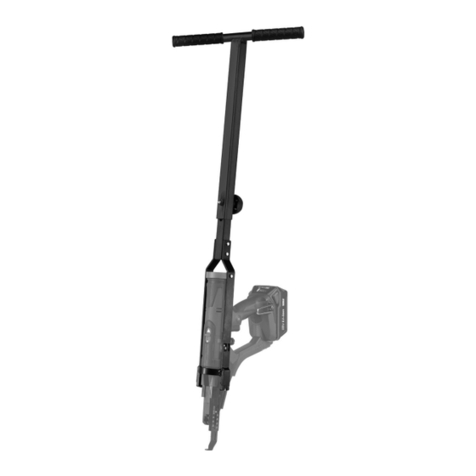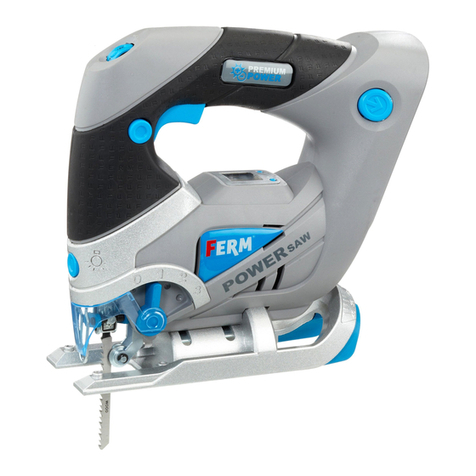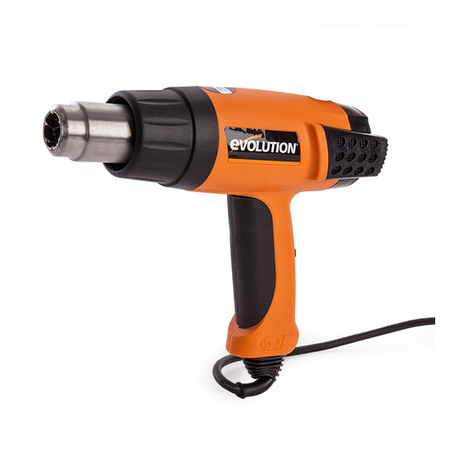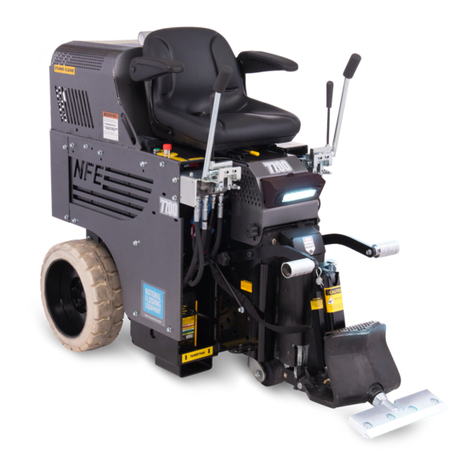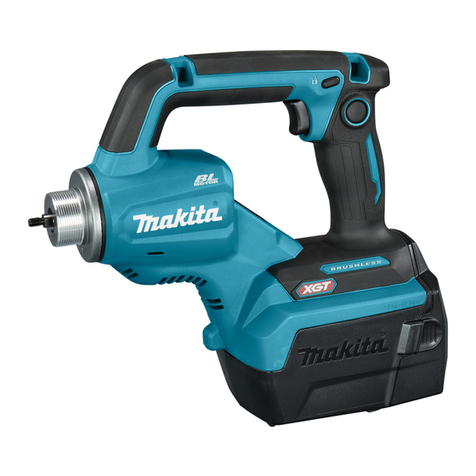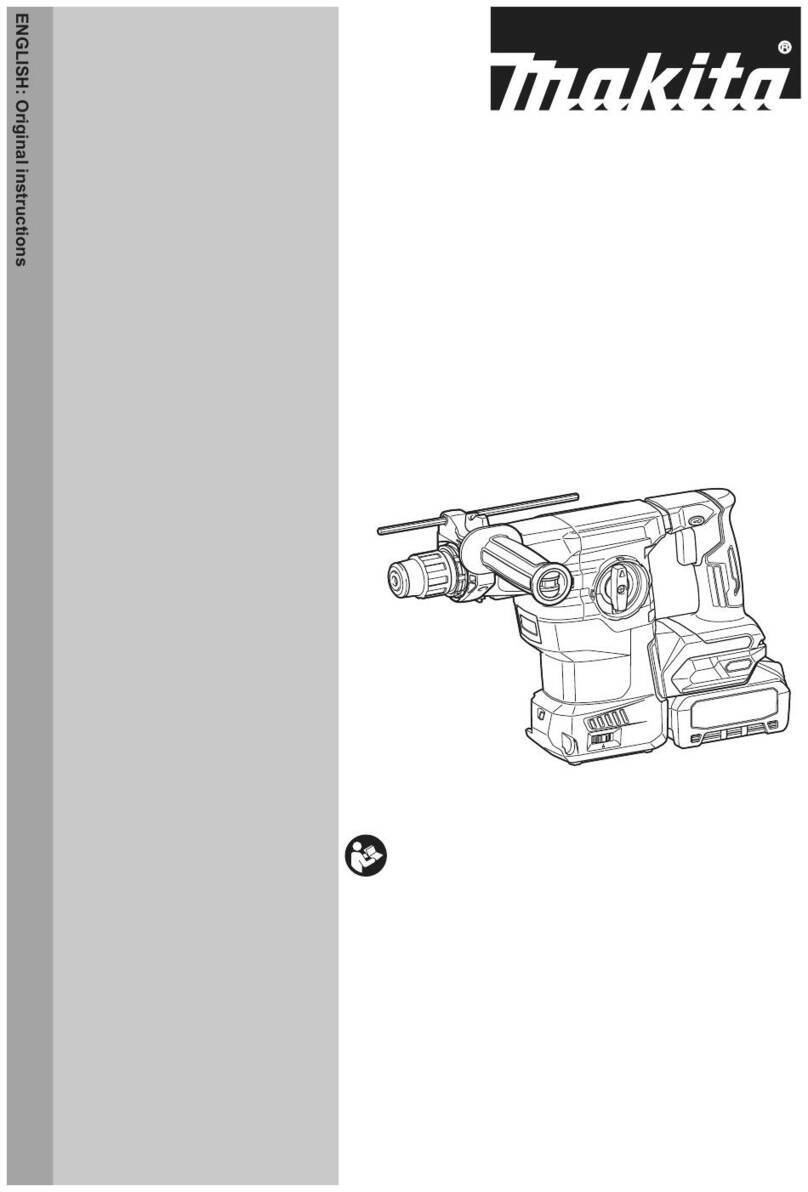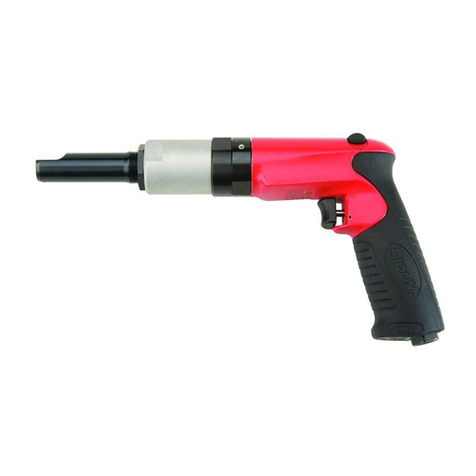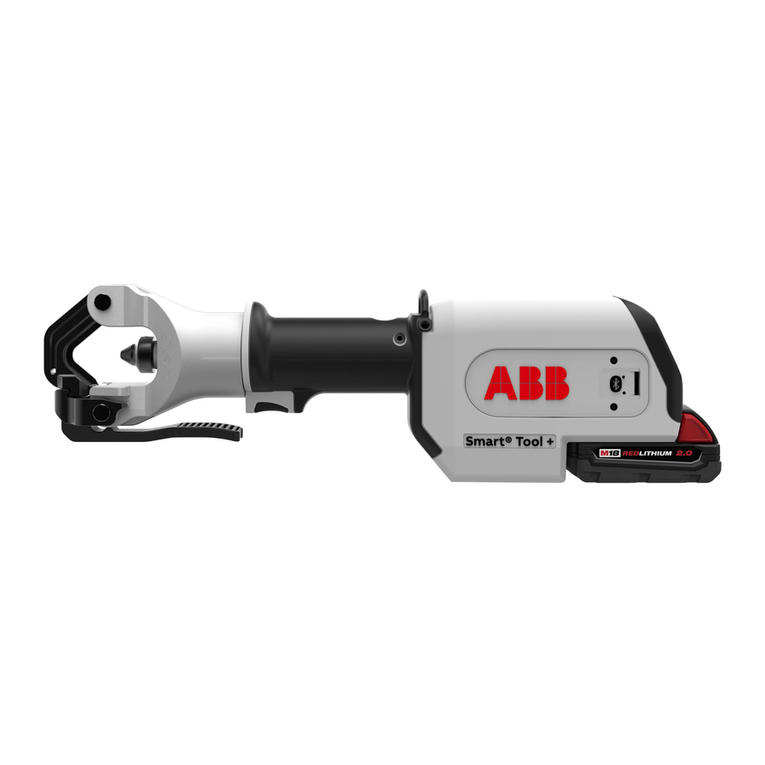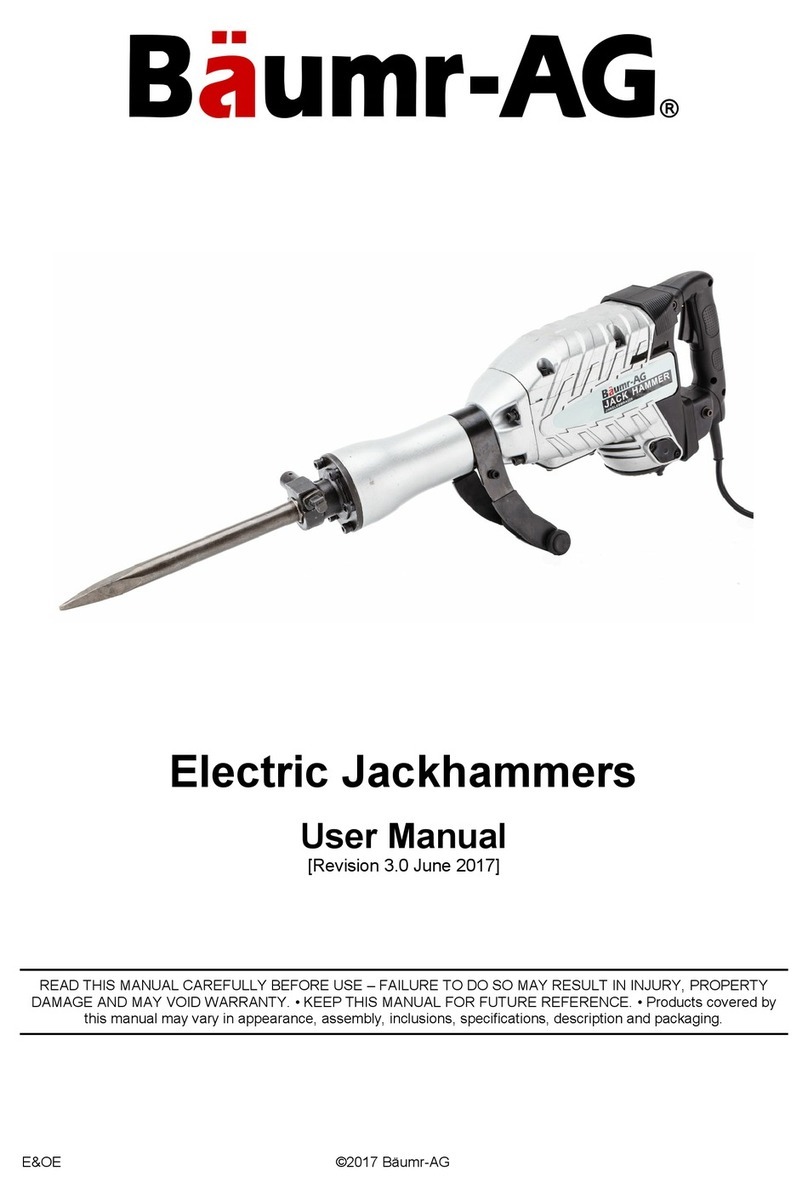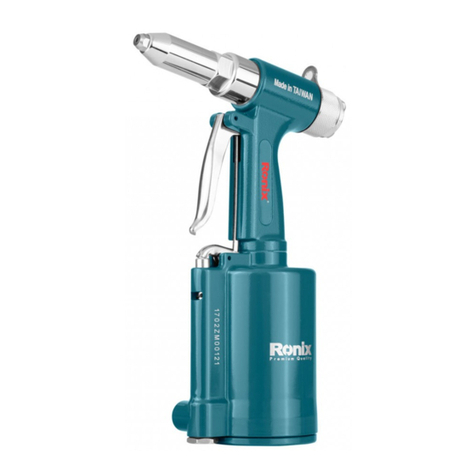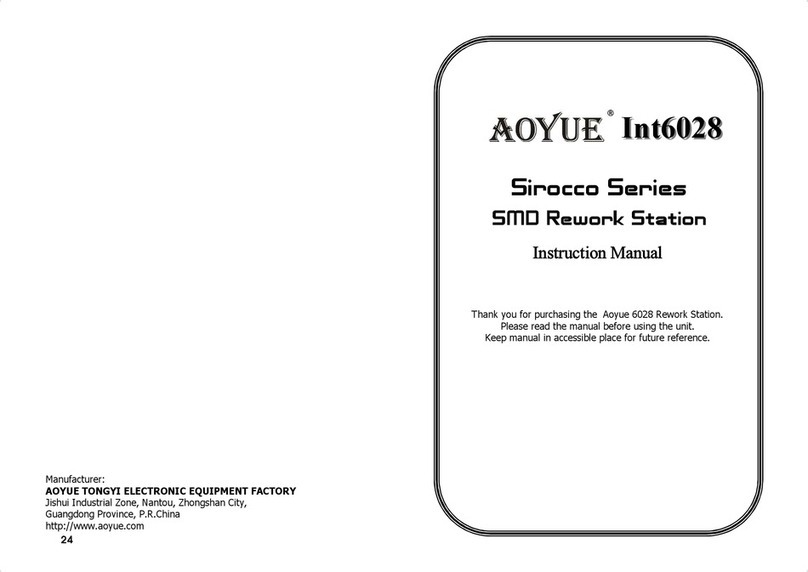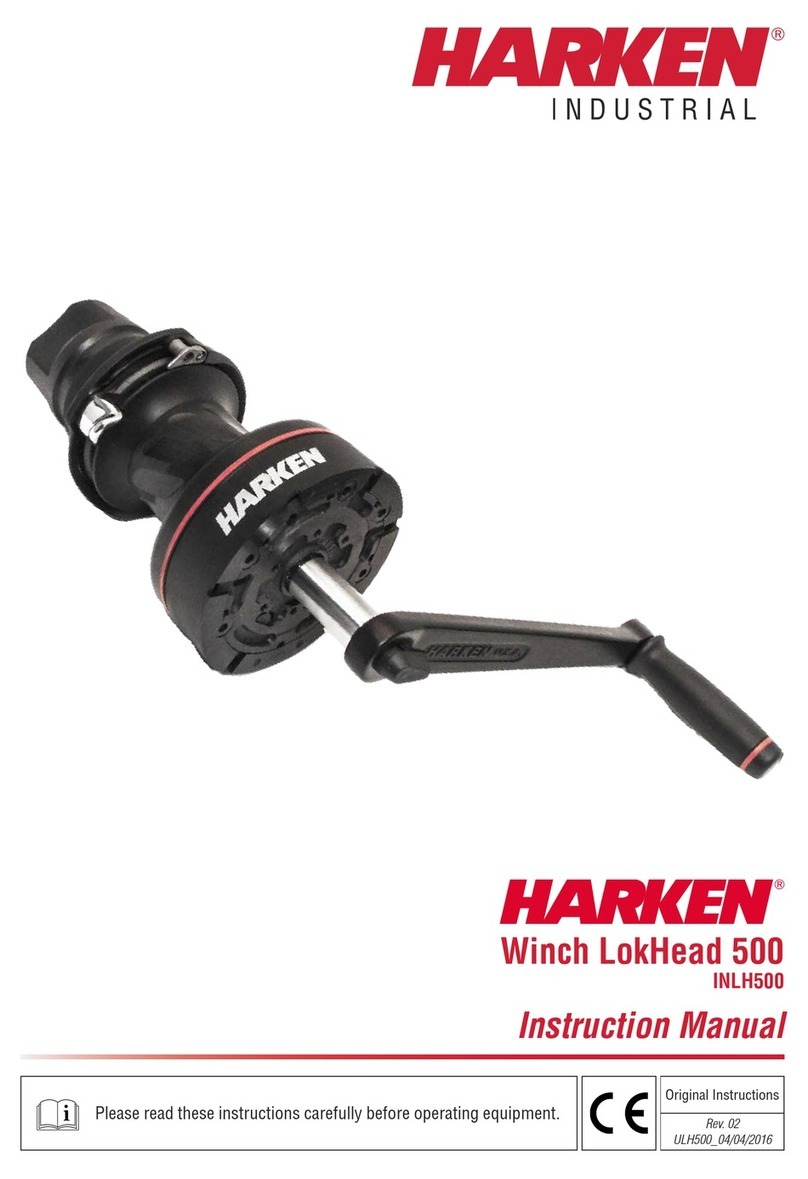
10 ENGLISH
5. Never operate the tool while people, especially
children, or pets are nearby.
6. Do not overreach and keep balance at all
times.Alwaysbesureoffootingonslopesandto
walk, never run.
7. Do not touch moving hazardous parts before
the tool is disconnected from the mains and/or
the battery cartridge is removed from the tool.
8. Always wear substantial footwear and long
trousers while operating the tool.
9. Disconnect the supply and/or remove the
battery cartridge from the tool:
• wheneverthetoolisleftbytheuser,
• beforeclearingablockage,
• beforechecking,cleaningorworkingonthe
tool,
• afterstrikingaforeignobjecttoinspectthe
tool for damage,
• ifthetoolstartstovibrateabnormally,for
immediately check.
10. Never operate the tool with defective guards
or shields, or without safety devices, or if the
cord is damaged or worn.
11. Avoid using the tool in bad weather conditions
especially when there is a risk of lightning.
12. Check the branches for foreign objects, such
as wire fences or hidden wiring before operat-
ing the tool.
13. Hold the tool rmly when using the tool.
14. The tool is intended to be used by the operator
at ground level. Do not use the tool on ladders
or any other unstable support.
15. Be careful not to catch foreign matter between
the shear blades.Iftheshearbladesarejammed
withforeignmatter,immediatelyswitchothetool
anddisconnectthebatteryfromthetool.Then
removetheforeignmatterfromtheshearblades.
16. Never hold the branch you are pruning with
your free hand. Keep your free hand away from
thecuttingarea.Nevertouchtheshearblades,
they are very sharp and you may cut yourself.
17. Don’t force the tool to make it cut. You could
slipandinjureyourselforcutsomethingelse
unintentionally.
18. Avoid cutting electrical wires that may be
hidden.
19. Handle the shear blades with extreme care to
prevent cuts or injury from the shear blades.
20. When not in use, always keep the tool in its
holster.
21. When power cords and cables get hot, stop
using the tool and turn it o. Allow the tool to
coolbeforearestart.
22. Do not handle power plugs, sockets and con-
nectors with wet hands. It may cause electric
shock.
Important safety instructions for
battery cartridge
1.
Before using battery cartridge, read all instruc-
tions and cautionary markings on (1) battery
charger, (2) battery, and (3) product using battery.
2. Do not disassemble or tamper with the battery
cartridge.Itmayresultinare,excessiveheat,
or explosion.
3. If operating time has become excessively
shorter, stop operating immediately. It may
result in a risk of overheating, possible burns
and even an explosion.
4.
If electrolyte gets into your eyes, rinse them out
with clear water and seek medical attention right
away. It may result in loss of your eyesight.
5. Do not short the battery cartridge:
(1) Do not touch the terminals with any con-
ductive material.
(2) Avoid storing battery cartridge in a con-
tainer with other metal objects such as
nails, coins, etc.
(3) Do not expose battery cartridge to water
or rain.
A battery short can cause a large current
ow, overheating, possible burns and even a
breakdown.
6. Do not store and use the tool and battery car-
tridge in locations where the temperature may
reach or exceed 50 °C (122 °F).
7. Do not incinerate the battery cartridge even if
it is severely damaged or is completely worn
out. The battery cartridge can explode in a re.
8. Do not nail, cut, crush, throw, drop the battery
cartridge, or hit against a hard object to the
battery cartridge. Such conduct may result in a
re,excessiveheat,orexplosion.
9. Do not use a damaged battery.
10.
The contained lithium-ion batteries are subject to
the Dangerous Goods Legislation requirements.
Forcommercialtransportse.g.bythirdparties,
forwarding agents, special requirement on pack-
agingandlabelingmustbeobserved.
Forpreparationoftheitembeingshipped,consult-
ing an expert for hazardous material is required.
Pleasealsoobservepossiblymoredetailed
national regulations.
Tapeormaskoopencontactsandpackupthe
batteryinsuchamannerthatitcannotmove
around in the packaging.
11. When disposing the battery cartridge, remove
it from the tool and dispose of it in a safe
place. Follow your local regulations relating to
disposal of battery.
12. Use the batteries only with the products
specied by Makita.Installingthebatteriesto
non-compliantproductsmayresultinare,exces-
sive heat, explosion, or leak of electrolyte.
13. If the tool is not used for a long period of time,
the battery must be removed from the tool.
14. During and after use, the battery cartridge may
take on heat which can cause burns or low
temperature burns. Pay attention to the han-
dling of hot battery cartridges.
